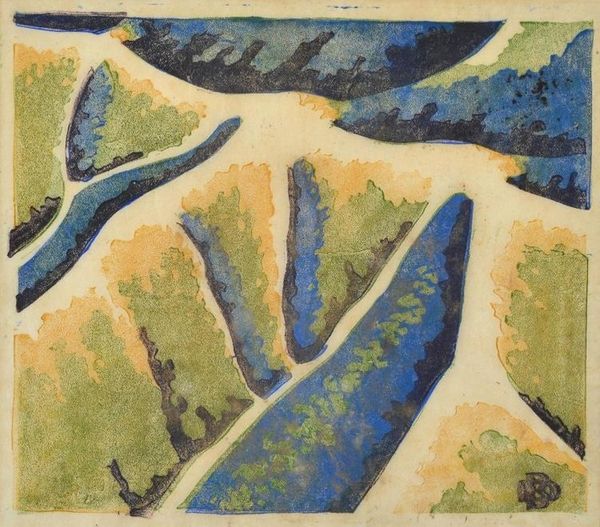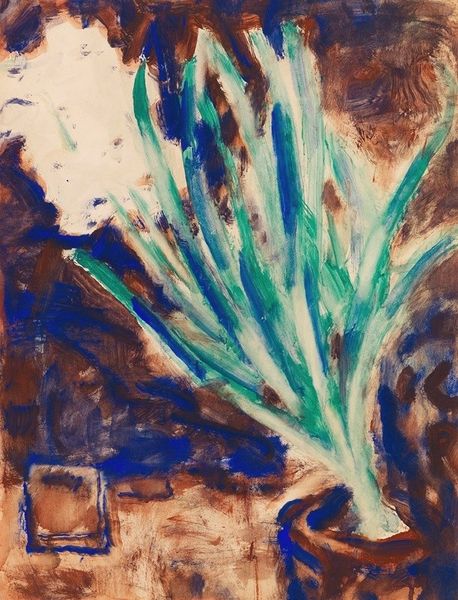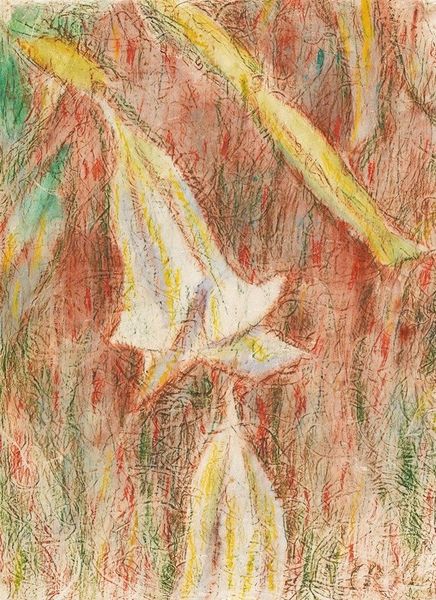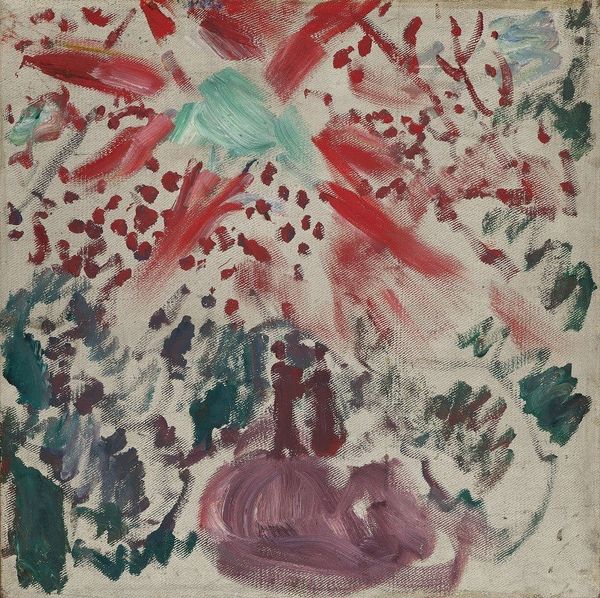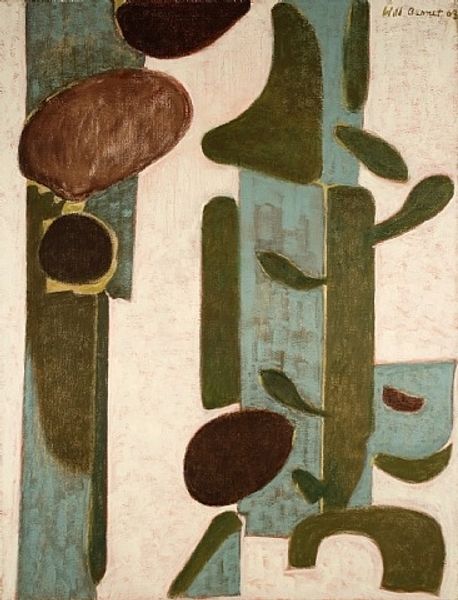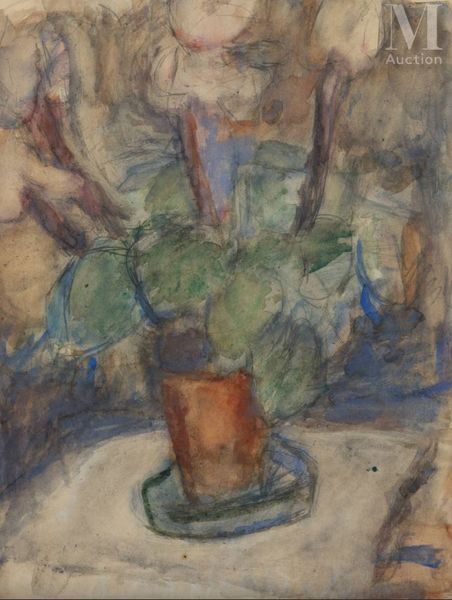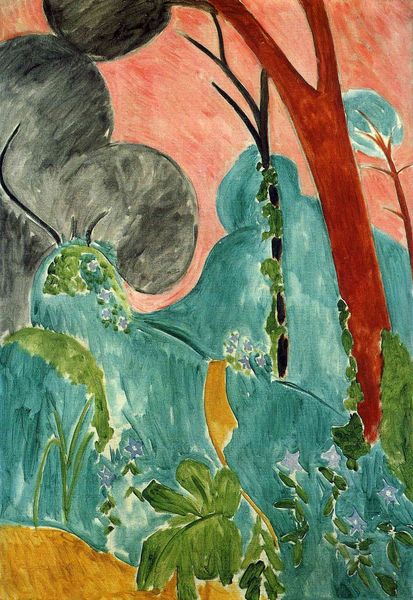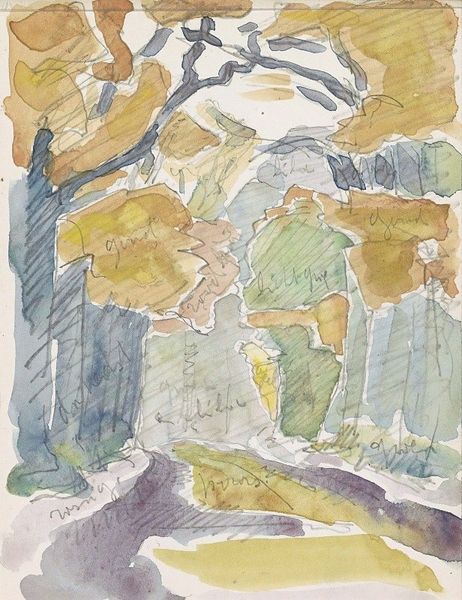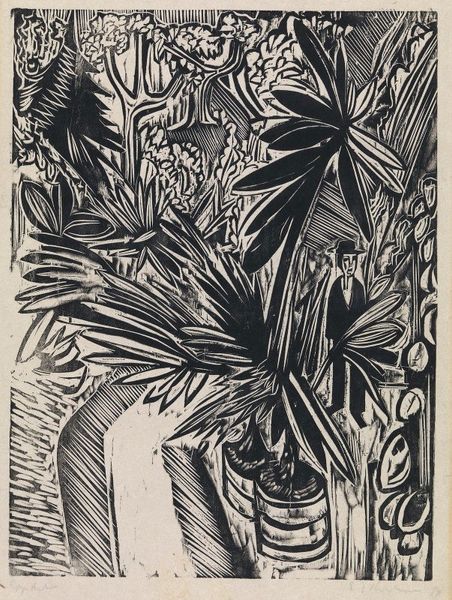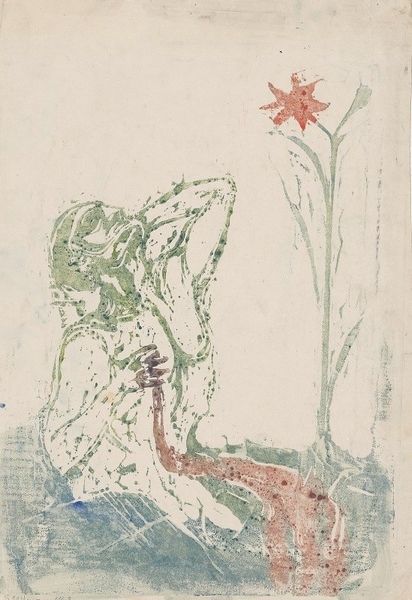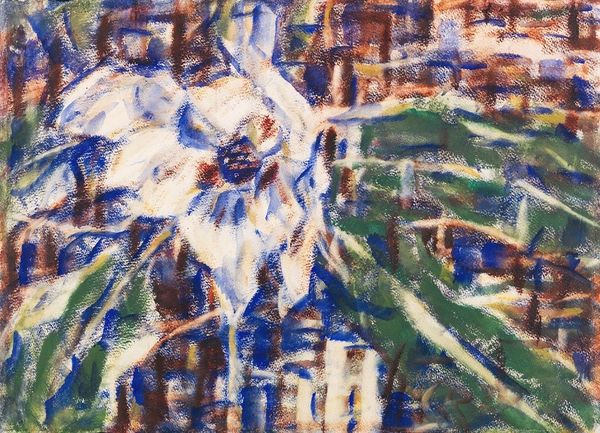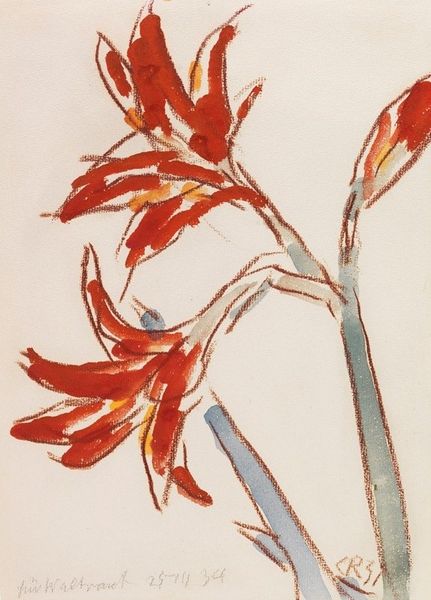
painting, watercolor
#
abstract-expressionism
#
abstract expressionism
#
abstract painting
#
painting
#
form
#
watercolor
#
plant
#
abstraction
Dimensions: 64 x 49 cm
Copyright: Jacques Hérold,Fair Use
Curator: Jacques Herold’s “Composition,” created in 1959, presents a rather enigmatic abstract arrangement rendered primarily in watercolor. My initial sense is one of muted dynamism, a curious balance between organic form and rigid structure. What’s your take on this artwork? Editor: Well, initially, it strikes me as something unearthed. There’s a rough texture, almost archaeological, but with vibrant life pushing through. The way it juxtaposes the softness of watercolors with hard-edged fragmented forms... It’s certainly eye-catching. Curator: Yes, the piece’s formal aspects are especially striking. Notice how Herold utilizes repetitive, cell-like structures that envelop both the figurative and the background elements. These structures almost resemble scales or shards, contributing to the composition's fractured, somewhat unsettling aesthetic. Semiotically, the structure could reflect larger concepts about postwar fragmentation or societal shifts of the time. Editor: That fragmentation definitely speaks to me, considering its timing in 1959—a period riddled with Cold War anxieties, decolonization movements, and a burgeoning existential angst finding expression in art. The limited palette creates a somber mood, with those pops of green possibly representing a fragile hope or the persistence of nature amid turmoil. What role did gallery spaces or exhibitions have at the time, impacting artwork reception? Curator: At that moment, abstract expressionism found validation through key figures and institutions such as Clement Greenberg or MoMA and provided space and legitimation. Editor: Interesting, it makes one wonder how this composition was received given its peculiar stylistic choices, particularly within such a tumultuous artistic climate. Was it seen as conforming, deviating, or simply existing outside those norms? It makes me consider its place within discussions about nature, the human condition, and even, perhaps, our understanding of decay and renewal. Curator: That's incisive. The cyclical essence seems to resonate with forms reminiscent of plants and other vegetal components depicted in the art, particularly the upper bloom and the vase in the painting's center. But, through careful deployment of line and chromatic modulation, these depictions convey a sense of vitality even in their breakdown. Editor: Indeed. I think exploring this unique articulation opens possibilities for considering this work, not as a representation of anything static, but as a fluid statement on life and art during uncertain times. Curator: Agreed. Herold's approach demonstrates the powerful capability to make such historical statements within the bounds of seemingly conventional shapes, designs, and compositions. Editor: Yes, there is beauty when taking the time to unpack art to extract meanings through different theoretical lenses.
Comments
No comments
Be the first to comment and join the conversation on the ultimate creative platform.

